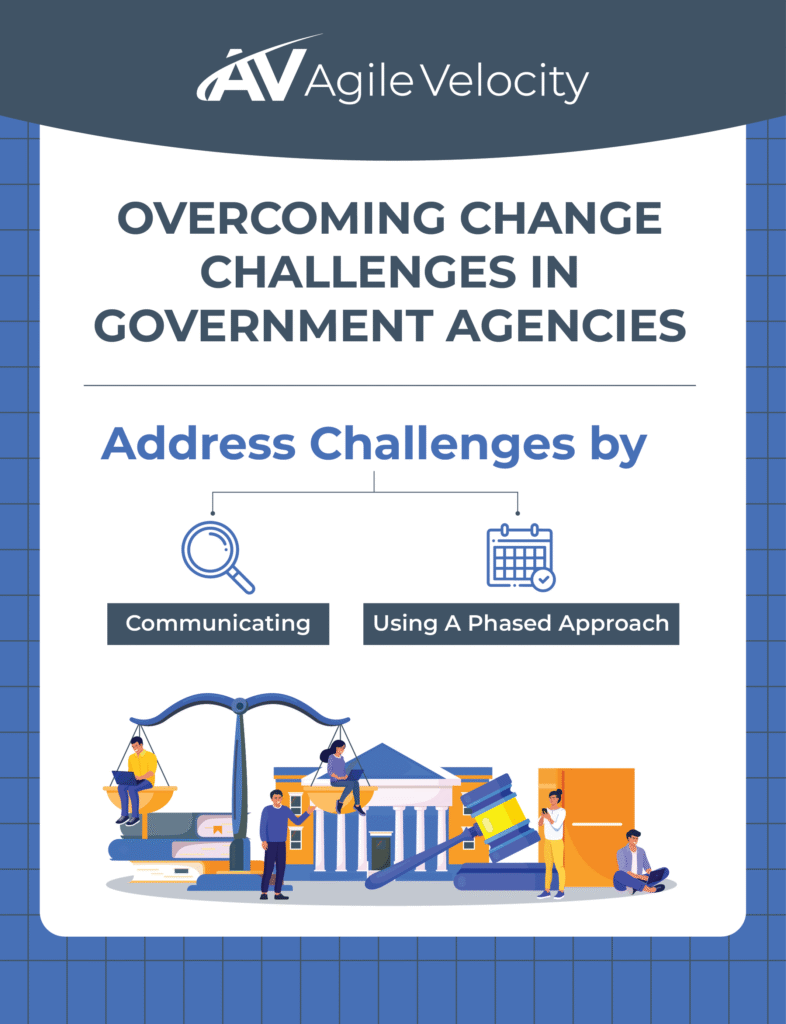Government agencies continue to experience rising operational expenses, placing significant pressure on leaders to deliver essential services within increasingly restricted budgets. This challenge demands solutions that extend beyond short-term measures. When expenses outpace funding, agencies can struggle to modernize, scale programs, or adopt innovative tools, which may compromise vital services.
Leaders are increasingly recognizing that reactive cost-cutting is not enough. Proactive restructuring and process optimization, anchored in transparent and efficient systems, help maintain service quality even as budgets tighten. Data-driven approaches, such as targeted operational assessments, focus on minimizing redundant activities and set objectives for sustained improvements. Agile principles and incremental transformation encourage government leaders to rethink workflows and strategically align resources with organizational needs.
Rising Operational Costs and Resource Constraints in the Government Sector
Government agencies face intense budgetary pressures that force them to do more with less. Rising operational costs affect everything from essential technology upgrades to staff training, leaving little room for experimentation or expansion. While short-term budget cuts might provide temporary relief, they rarely address the underlying inefficiencies driving long-term cost increases.
To meet the demands of constituents without compromising service quality, agencies increasingly turn toward holistic reforms. Leaders focus on streamlining workflows, refining communication structures, and reprioritizing resource allocation to reinforce key services. This often involves eliminating redundant approval processes or integrating efficient technology solutions to free up staff time, ultimately preserving public trust and service standards amidst escalating expenses.
Common Challenges Faced by Government Agencies
Many agencies continue to rely on outdated legacy systems, which are costly to maintain and hinder the adoption of modern tools. Such systems slow processes by pulling staff away from high-impact tasks. Inefficient workflows and siloed structures further compound these issues by creating communication gaps and redundant activities, leading to overextended personnel and rising operational costs.
Budget constraints add further strain. Public organizations must remain transparent while ensuring every dollar is carefully managed. Complex regulatory standards and rigorous public oversight extend decision-making timelines, making it more challenging to quickly adapt or redeploy resources over short or long terms. These bureaucratic hurdles often delay progress on critical initiatives.
At the same time, scaling operations or investing in new technologies becomes daunting for agencies working with fixed or slowly expanding budgets. Even when a compelling solution promises long-term benefits, short-term expenditures can seem risky. This tension between innovation and accountability underscores the challenge for these organizations in staying Agile while managing rising costs.
Reassessing Advisory Approaches to Government Operations
Various advisory frameworks are available to identify operational pain points. These services gather quantitative and qualitative data to highlight inefficiencies, bottlenecks, and areas where reorganization might drive cost savings. For example, advisors might propose aligning teams around shared objectives or streamlining approval processes to eliminate unnecessary steps.
A thorough assessment often involves workflow mapping, stakeholder interviews, and performance data analysis. By isolating areas that impede efficiency—such as outdated communication channels or overlapping responsibilities—leaders can develop clear, pragmatic plans tailored to an agency’s policies, culture, and obligations.
Agile Transformation in the Government Sector
Government agencies often struggle with rigid structures and extended decision cycles. Agile Transformation offers a mindset shift toward adaptability, milestone achievement, and cross-department collaboration. Teams break projects into smaller tasks that yield immediate or high-impact benefits; over time, these incremental gains can inform broader strategic initiatives.
Agile practices emphasize iterative planning and regular reviews. Techniques such as Scrum and Kanban focus on transparent communication, which is particularly useful in government settings where multiple stakeholders must align on objectives. By making small, controlled changes to workflows, agencies can evolve procedures while continuing to meet strict compliance requirements.
Leveraging Transformation Tools to Support Efficiency
There are specialized tools designed to aid Agile change initiatives. One example is Path to Agility® Navigator—an assessment solution that offers data-driven visibility into progress through clear roadmaps and performance metrics. However, it goes far beyond simply visualizing metrics, this software provides a strategic compass, guiding leadership in prioritizing critical changes and aligning them directly with overarching business goals. It serves as a dynamic framework for measuring progress not merely through isolated data points, but by assessing the evolution and impact of key capabilities, ensuring that every step of the transformation journey contributes concretely to desired outcomes.
Although it was initially developed for the private sector, and direct evidence of its use within government agencies is limited, such platforms provide robust functionality that may be adaptable to help public sector leaders evaluate capabilities, identify bottlenecks, and assess the impact of improvements.
Lean Portfolio Management for Strategically Allocating Resources
For government organizations juggling multiple programs with limited budgets, Lean Portfolio Management offers an approach that directs funds to the highest-value initiatives. Rather than spreading resources thinly across every request, leaders can use this strategy to channel investments into projects that promise the most significant benefits for constituents.
An initial step in Lean Portfolio Management is categorizing programs by cost, resource requirements, and strategic importance. Lower-priority projects can be paused or reshaped to free up resources for more impactful work. By tracking key performance indicators (KPIs) across projects, leaders can reallocate funding to programs demonstrating the best results, striking a balance between fiscal control and service delivery.
Agile Coaching to Empower High-Performance Government Teams
Transitioning to new working models often involves both cultural and procedural shifts. Agile Coaching helps teams adopt practices such as short planning cycles and regular feedback sessions. Coaches support staff in improving communication and in applying Agile principles—not as a rigid framework, but as a flexible approach to structuring work.
In environments bound by strict regulations, a strong coaching framework can guide teams through the complexities of policy-driven constraints without stifling innovation. By promoting controlled experimentation and iterative progress, Agile coaches help teams navigate change while ensuring improvements in service quality and operational resilience.
Overcoming Bureaucratic Inefficiencies through Continuous Process Improvement

Excessive bureaucracy often creates significant overhead in government agencies. Redundant processes, delayed decisions, and escalating costs are common consequences of overly complex administrative structures. A continuous process improvement strategy systematically evaluates existing procedures to determine which tasks add real value, while automating or eliminating those that do not.
Regular sessions based on Agile methodologies can solidify improvements through incremental reviews. Small but consistent changes—such as switching from paper-based to digital forms or merging overlapping reports—can gradually reduce inefficiencies while supporting better fiscal management and service delivery.
Addressing Challenges in Implementing Change for Government Agencies
Deep-rooted operating procedures, stringent regulations, and numerous stakeholder groups can make change challenging. Resistance often arises when benefits are not clearly communicated. Leaders must therefore ensure that employees understand how proposed changes will ease workloads and enhance outcomes.
Public oversight further complicates change. Agencies must meet high transparency standards by reporting progress to legislators or the public. A phased approach that starts small and scales gradually can minimize disruption and help build momentum through early successes.
Success Factors for Sustainable Transformation in Government
Sustainable transformation requires strong leadership, active employee engagement, and measurable targets. Leaders who champion change help reinforce a clear message throughout the organization, boosting morale and establishing a unified direction. Involving staff through idea sharing and feedback fosters a sense of ownership, reducing resistance to change.
Tracking tangible outcomes is equally important. Key indicators—such as project timelines, resource utilization, and cost reductions—can reveal which initiatives are effective and which need adjustment. Data-driven feedback loops thus support continuous learning and reinforce the value of ongoing adaptation. Over time, organizations that embrace a culture of continuous improvement become better positioned to meet evolving challenges.
How Agile Velocity’s Services Help Government Agencies
Many principles that drive private-sector success carry over into government contexts when thoughtfully adapted. For example, while success stories from private enterprises—such as Southwest Airlines and Texas Mutual Insurance—demonstrate Agile Velocity’s approach on a large scale, similar approaches may hold potential to support operational improvements in federal, state, or municipal settings.
Similarly, by focusing on outcomes rather than merely implementing Agile frameworks rigidly, Agile Velocity’s methods can support better project planning and resource alignment. When integrated carefully, these approaches may contribute to enhanced efficiency and service delivery.
Agile Velocity also offers Agile Coaching services adapted for diverse organizational environments. This coaching bridges the gap between policy requirements and practical, day-to-day operations. While private-sector successes have been well documented, the application of these principles in the public sector is largely inferred from the adaptability of Agile methodologies—a notion that suggests potential rather than offering direct evidence.
Additional Steps to Drive Operational Efficiency in Government

Many government leaders wonder how to sustain momentum once change initiatives are underway. Information from organizations like the National Association of State Budget Officers supports the notion that strategic planning plays a critical role in managing short-term budget cycles as well as long-term fiscal objectives. Key actions in this realm may include reassessing program priority, creating structured feedback channels, and forecasting future resource needs. Some agencies use short planning cycles to continuously refine strategies, realigning funding towards high-impact initiatives—a process that resonates with Agile and Lean principles.
Agencies can further optimize daily operations by automating routine tasks, enhancing communication channels, and offering ongoing training. Automation might involve deploying simple tools to collect, analyze, and visualize data, thereby freeing teams to focus on more complex, high-value work. Clear communication frameworks, such as structured briefings, encourage collaboration across departments, even though regulatory requirements may necessitate multiple approvals. Such measures, combined with an iterative process of improvement, help ensure that every operational step contributes to reducing inefficiencies.
Regularly verifying key performance metrics also remains crucial. Routine check-ins can spotlight emerging issues, enabling swift corrective actions. When consistently applied, these practices foster an environment where ideas and opportunities for savings naturally surface, ultimately empowering leaders to enhance public services without exceeding budget limits.
Key Takeaways for Achieving Government Efficiency
Managing rising operational costs remains a critical challenge for government agencies. By embracing Agile Transformation, modernizing legacy systems, and strategically directing resources through Lean Portfolio Management, public organizations can move beyond short-term fixes toward long-term resilience. Assessment tools—such as the adaptable Path to Agility Navigator—offers a structured, outcome-based approach to guiding transformation and prioritizing change. This tool provides a measure of transparency and roadmap clarity that aligns with business goals and it measures progress through capabilities.
Agile Coaching and thoughtful application of Agile Velocity for business operations consulting further supports a shift toward more sustainable operations.
Together, these strategies help agencies focus resources on high-value initiatives, streamline workflows, and maintain service quality within tight budget constraints. With a proactive mindset and carefully tailored methodologies, government agencies can continue delivering essential services even amid ongoing financial pressures. To learn more about integrating these approaches into your organization, explore Agile Velocity’s business consulting solutions.





